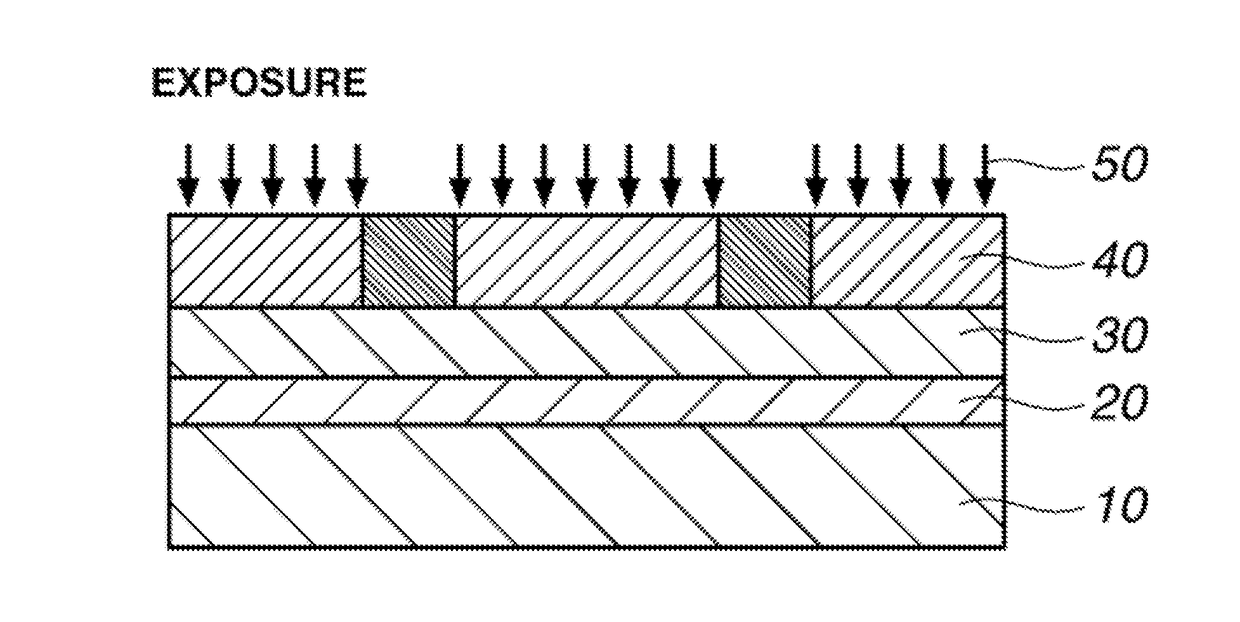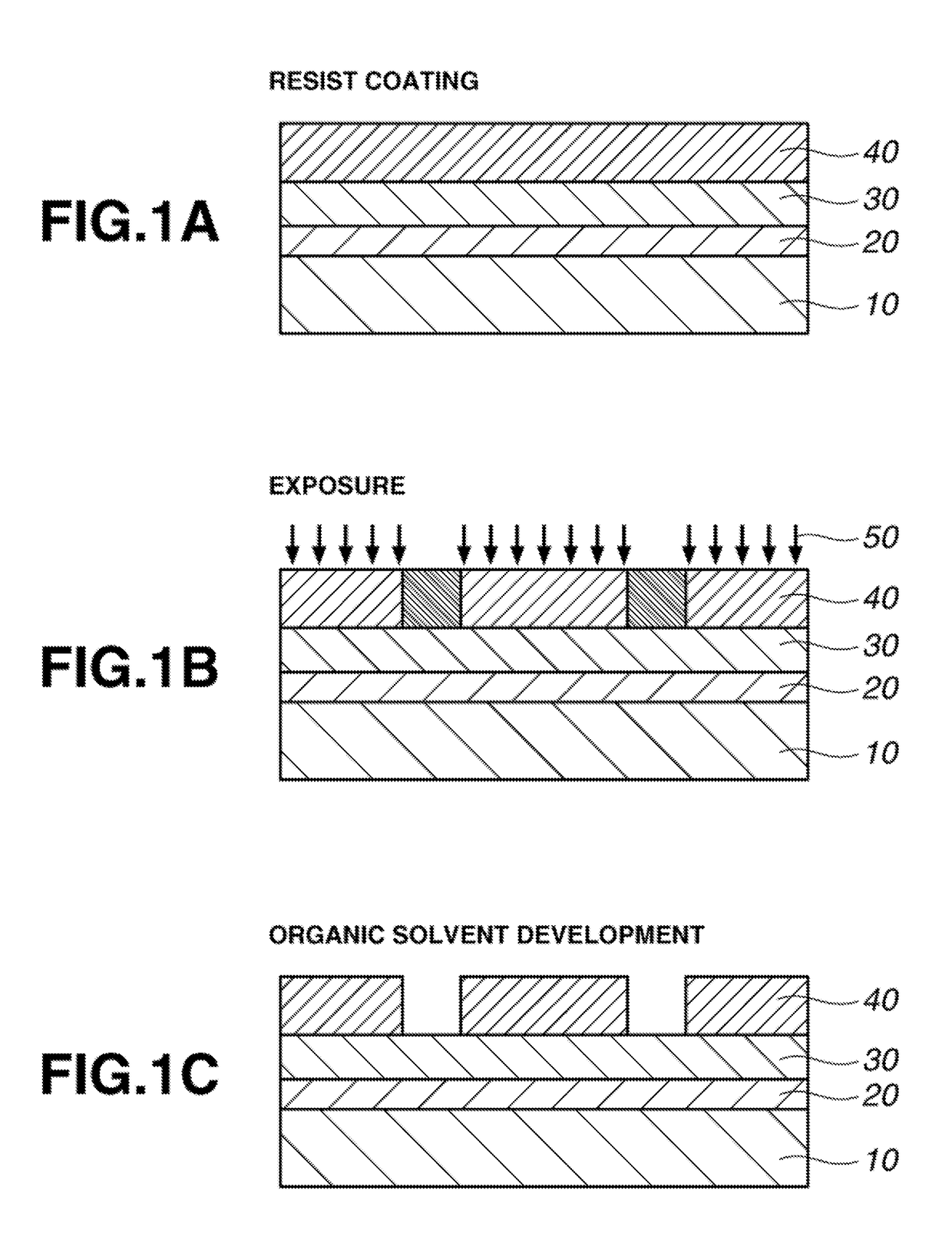Monomer, polymer, resist composition, and patterning process
a polymer and resist technology, applied in the field of monomer, polymer, resist composition, and patterning process, can solve the problems that the prior art pags fail to meet some of these requirements, and achieve the effects of reducing acid diffusion, high sensitivity, and high resolution
- Summary
- Abstract
- Description
- Claims
- Application Information
AI Technical Summary
Benefits of technology
Problems solved by technology
Method used
Image
Examples
example 1-1
[0285]Synthesis of PAG-1
[0286]PAG-1 was synthesized according to the following scheme.
[0287]
(1) Synthesis of Intermediate 1
[0288]Under ice cooling, a solution of 20.87 g of trifluoromethanesulfonamide and 38.76 g of pyridine in 70 g of acetonitrile was added dropwise to a mixture of 18.90 g of sulfuryl chloride and 70 g of acetonitrile. The reaction solution was warmed at room temperature, stirred for 90 minutes for aging, and ice cooled. Under ice cooling, a solution of 27.33 g of 2-hydroxyethyl methacrylate and 1.71 g of 4-dimethylaminopyridine in 140 g of acetonitrile was added dropwise to the reaction solution. The reaction solution was heated at 50° C. and stirred for 15 hours. Methanol, 10 g, was added to the reaction solution, which was stirred at 50° C. for 4 hours for aging and quenched. The reaction solution was cooled at room temperature, to which 560 g of methyl isobutyl ketone (MIBK) and 420 g of water were added. The organic layer was taken out and washed with 280 g of...
examples 1-2 to 1-7
[0298]Synthesis of PAG-2 to PAG-7
[0299]Monomers PAG-2 to PAG-7 were synthesized by the same procedure as in Example 1-1 aside from changing the type of reactants (sulfonamide and alcohol).
[0300]
2) Synthesis of Base Resin
example 2-1
[0301]Synthesis of Polymer P-1
[0302]In a flask under nitrogen atmosphere, 25.1 g of PAG-1, 43.8 g of 1-t-butylcyclopentyl methacrylate, 9.8 g of 3-hydroxyadamantyl-1-yl methacrylate, 21.3 g of 2-oxotetrahydrofuran-3-yl methacrylate, 4.79 g of dimethyl 2,2′-azobis(isobutyrate), and 175 g of methyl ethyl ketone (MEK) were combined to form a monomer solution. Another flask in nitrogen atmosphere was charged with 58 g of MEK, which was heated at 80° C. with stirring. With stirring, the monomer solution was added dropwise to the flask over 4 hours. After the completion of dropwise addition, the polymerization solution was continuously stirred for 2 hours while maintaining the temperature of 80° C. The polymerization solution was cooled to room temperature, whereupon it was added dropwise to a mixture of 100 g of MEK and 900 g of hexane. The precipitated copolymer was collected by filtration, washed twice with 600 g of hexane, and vacuum dried at 50° C. for 20 hours, obtaining Polymer P-1...
PUM
 Login to View More
Login to View More Abstract
Description
Claims
Application Information
 Login to View More
Login to View More - R&D
- Intellectual Property
- Life Sciences
- Materials
- Tech Scout
- Unparalleled Data Quality
- Higher Quality Content
- 60% Fewer Hallucinations
Browse by: Latest US Patents, China's latest patents, Technical Efficacy Thesaurus, Application Domain, Technology Topic, Popular Technical Reports.
© 2025 PatSnap. All rights reserved.Legal|Privacy policy|Modern Slavery Act Transparency Statement|Sitemap|About US| Contact US: help@patsnap.com



